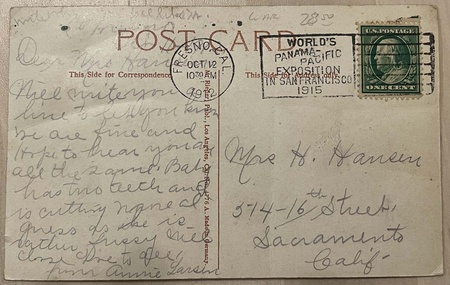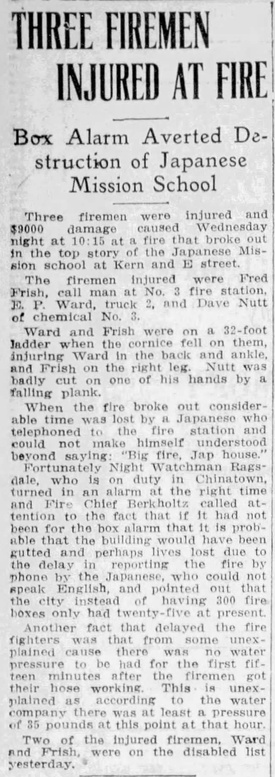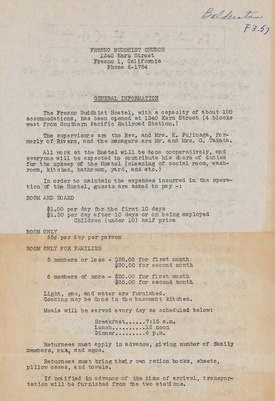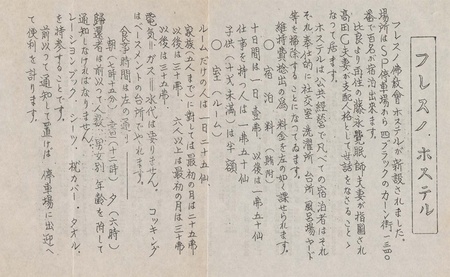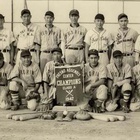One of my favorite hobbies is collecting postcards. I began collecting in 2013, after I inherited a large collection of stamps and envelopes from my Dutch grandparents, a pair of avid collectors who amassed thousands of stamps ranging from the 1850s to the 1980s.
What initially struck me about my grandparents’ collection was its magnitude and variety; some stamps came from newly-formed republics in Africa and Southeast Asia after decolonization, while others originated from now-extinct states such as Yugoslavia and the Soviet Union. Each stamp was beautifully decorated with artwork that conveyed a specific message—often one with nationalistic overtones—that presented the viewer with a small taste of what each nation had to offer.
While I cherish my family’s stamp collection, I became more interested in collecting postcards as historic documents (not least because they are often affordable for new collectors – I usually spend $1-$5 on average per card). I discovered a wide range of postcards that contained real photographs of people and places, and I soon began searching for ones with specific connections to historical events. I made a habit of collecting antique postcards from every destination I visited, often looking for older images of the locales I passed through to see how they changed over time.
Which brings me to the topic of this column: about a year ago, I happened to come across a color lithograph postcard depicting the Fresno Japanese Buddhist Church. The postcard bears a cancellation mark from 1912, along with a stamp announcing the upcoming World’s Panama-Pacific Exposition in San Francisco for 1915. While this postcard may seem ordinary, it offers one of the only surviving views of the first Fresno Buddhist Church before it burned down in 1919.
The history of the Fresno Buddhist Church dates back to November 1899, when several Issei families in Fresno held a howakai, or religious gathering. A few months later, in January 1900, San Francisco Buddhist minister Reverend Kakuryo Nishijima, one of the first Jodo Shinshu missionaries to arrive in the United States, came to Fresno to organize a local chapter of the Young Men’s Buddhist Association. Members of the congregation initially met at a small residence at 825 F Street while waiting for a new temple to be built.
In December 1900, the Hompa Hongwanji Temple of Kyoto assigned Reverend Fukyo Asaeda to lead the Fresno congregation. Soon after, another minister, H. Yasui, who spoke English, was sent to help with ministering to the growing congregation and bringing in new converts. On October 19, 1901, the Fresno Morning Republican announced that the Fresno Buddhist Church had secured eight lots of city land and $4000 in funding to build a new church. Chartered under the title “Fresno Buddhist Church,” the building was described as being of “Japanese style of architecture outside” and “the inside to be finished in the European style.”
On April 8, 1902, the Fresno Buddhist Church was officially opened at 1340 Kern Street. For the next decade, the Fresno Buddhist Church housed the growing congregation of Fresno’s Japanese American community. Several noteworthy events were recorded by local newspapers: For example, on April 10, 1910, the Church held a celebration for the 2543rd birthday of Siddhartha Gautama, or the Buddha.
Then, on May 28, 1919, tragedy struck. At 10:15PM, a mysterious fire broke out on the top story of the church. The McClatchy-owned and anti-Japanese Fresno Bee cruelly chastised a Japanese American witness whose inability to speak English caused a delay in reporting the fire. A nightwatchman later reported the fire using a box alarm, and several fire crews arrived to extinguish the blaze. Due to issues with the fire hoses, three firemen were injured during attempts to put out the fire.
The fire gutted the roof and second floor of the church, causing $9000 in damages. The loss, which was not covered by insurance, devastated Fresno’s Japanese American community. Nevertheless Japanese American community leaders donated $50 to the Fresno Fireman’s Fund to thank the fire crews for saving the remainder of the church, which housed the city’s sole Japanese language school.
The cause of the fire remains a mystery. One likely explanation is that the fire was a hate crime, set by Fortunato Padilla as part of a spate of arson attacks against Japanese American communities across California. Padilla confessed to the Sacramento police in August 1923 that he had carried out several arsons of Japanese American properties that resulted in $5 million in damages and ten deaths. The Los Angeles Times reported that Padilla began his string of attacks in Fresno in 1921, starting with “a Japanese mission and three homes.” While the attack listed in the article occurred almost two years after the destruction of the Fresno Buddhist Church, it seems plausible to suppose that he carried out that attack as well.
Over the course of the year after the fire, the Fresno Japanese American community pooled together funds to rebuild the church. On November 27, 1920, local newspapers announced the dedication of a new Buddhist church, built over the previous temple. This Buddhist Church would become the historic center of Fresno’s Japanese American community and the site of several important events.
In September 1921, after Fresno County District Attorney B.W. Gearhart brought multiple escheat lawsuits under California’s Alien Land Act against Japanese families in Fresno, a mass meeting was held at the church to organize legal opposition. In October 1921, the Japanese Ambassador to Italy gave a speech at the Fresno Buddhist Church to raise awareness of Japan’s peace missions and the unfortunate persecution facing Japanese communities in California.
The church would again become a hub of community organizing after the bombing of Pearl Harbor. In January 1942, the Fresno Buddhist Church announced the permanent closure of its Japanese language school. Late in March, the FBI arrested priest Enoyo Shigefuji and sent him to internment at Fort Missoula, Montana.
It should be mentioned that while the Fresno Buddhist Church survived the war, several others did not: in nearby Kingsburg, local arsonists burned the Buddhist church to the ground in February 1944. In Hanford, the city denied the local Buddhist Church the tax exemption granted to other religious institutions. Following the lifting of exclusion in January 1945 and the closure of the camps, Reverend Kakumin Fujinaga opened the Fresno Buddhist Church as a hostel for Japanese American families returning from camp.
The temple remained a gathering place for the Fresno Japanese American community for decades. As historian and native Fresnan Patricia Wakida wrote in an article for Discover Nikkei, the church was the core of the Fresno Japanese American community: “our central identity was rooted in the old temple on the corner of Kern and E Streets, and with little effort my mind was flooded with memories of the numerous funeral services, Hanamatsuri, and especially the annual Obon festivals, when stopping in at Komoto’s Department Store and Central Fish were all part of an organic experience of visiting West Fresno.”
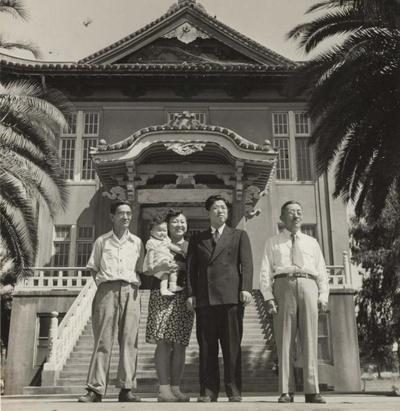
In 2011, community leaders made the difficult decision to sell the temple, citing various factors such as dwindling congregation sizes and safety concerns. Many cited the fact that former parishioners now attended the Family Dharma Center on the north side of town. The temple was ultimately sold in 2018 to a group of Burmese doctors who devoted the temple to the use of the Myanmar (Burmese) Buddhist community. It now operates under the name Mrauk Oo Dhamma Center. Even though the temple has changed hands, the original façade remains as it has been since 1920.
Although postcards have now lost much of their currency as the world moves towards digital media, they still represent important documents that capture important parts of human history. This postcard captures a bygone era when Issei came together and built a beautiful structure to house the local Buddhist community, at a time when Buddhists faced persecution.
Today, their temple still stands as a working institution as well as a historic landmark to Fresno’s Japanese American community. The fact that there was a postcard created of the temple, which was presumably marketed specifically to tourists, also speaks volumes about the civic pride the temple inspired in the larger Fresno area.
So where is the postcard now? I gifted it to my friend, poet Lawson Inada, as a token of my appreciation for his advice and for sharing countless stories with me about Fresno. Inada later told me that several Japanese American families stayed at the Buddhist Temple after returning from Amache. He will soon appear in another article for this series.
© 2023 Jonathan van Harmelen



